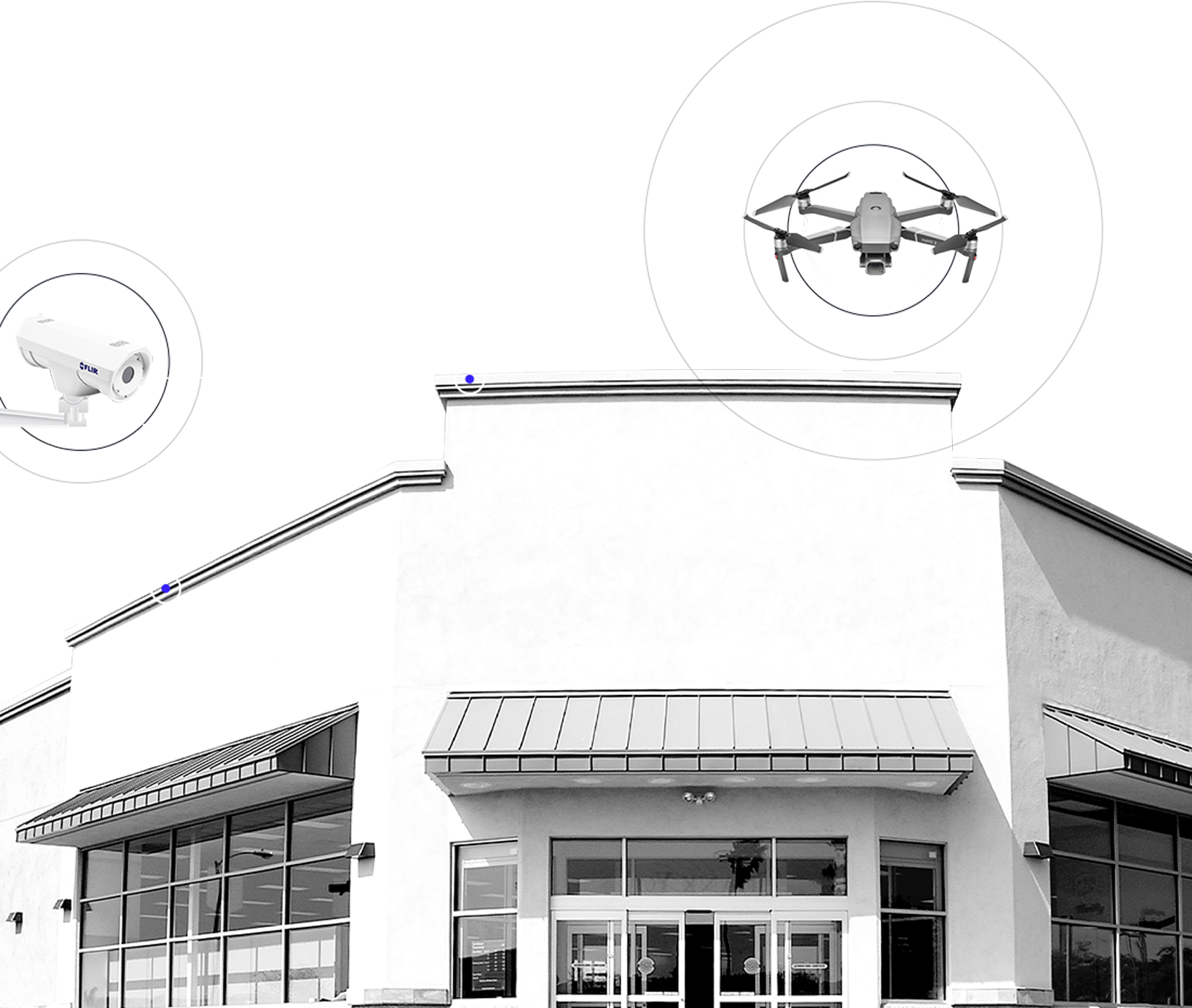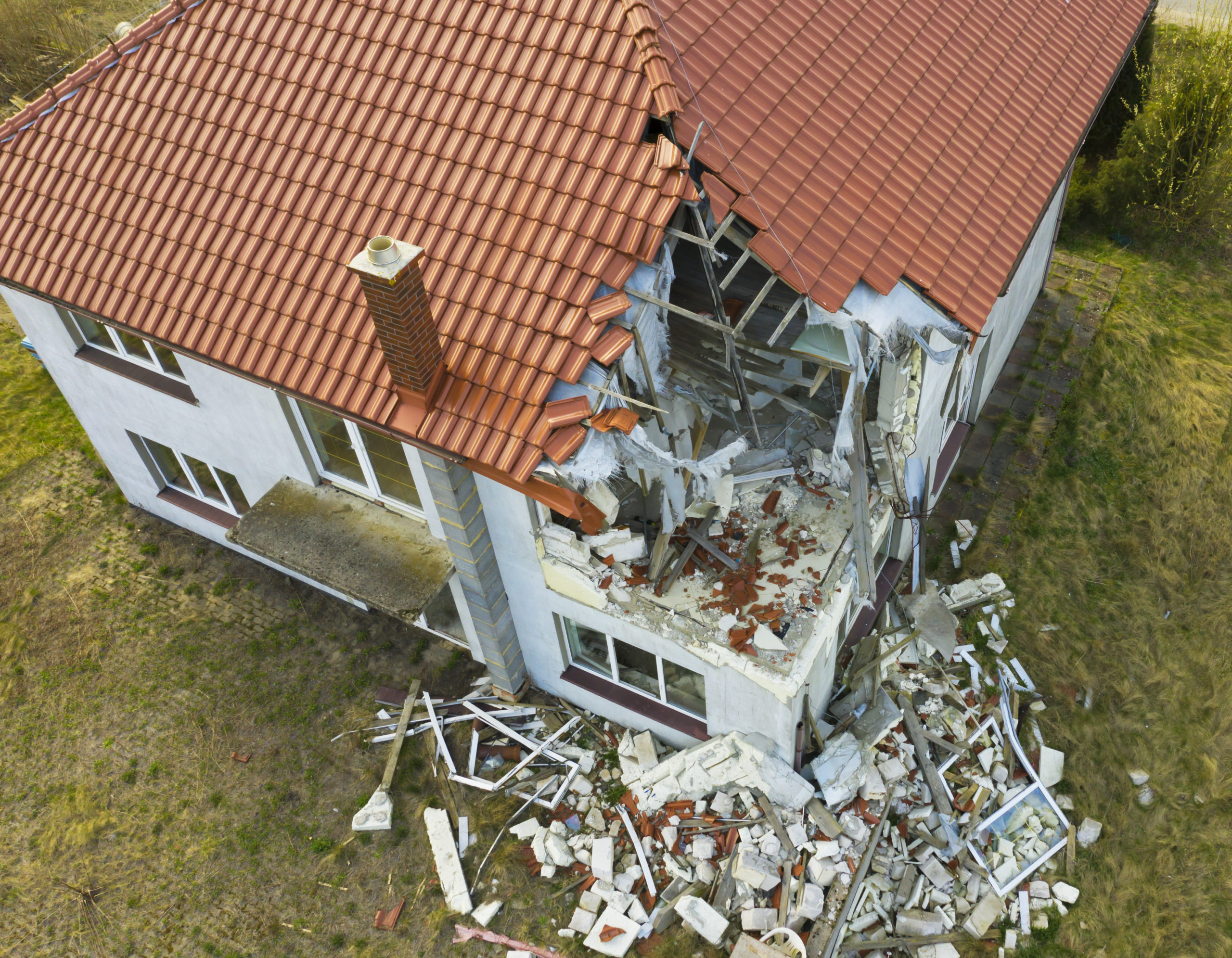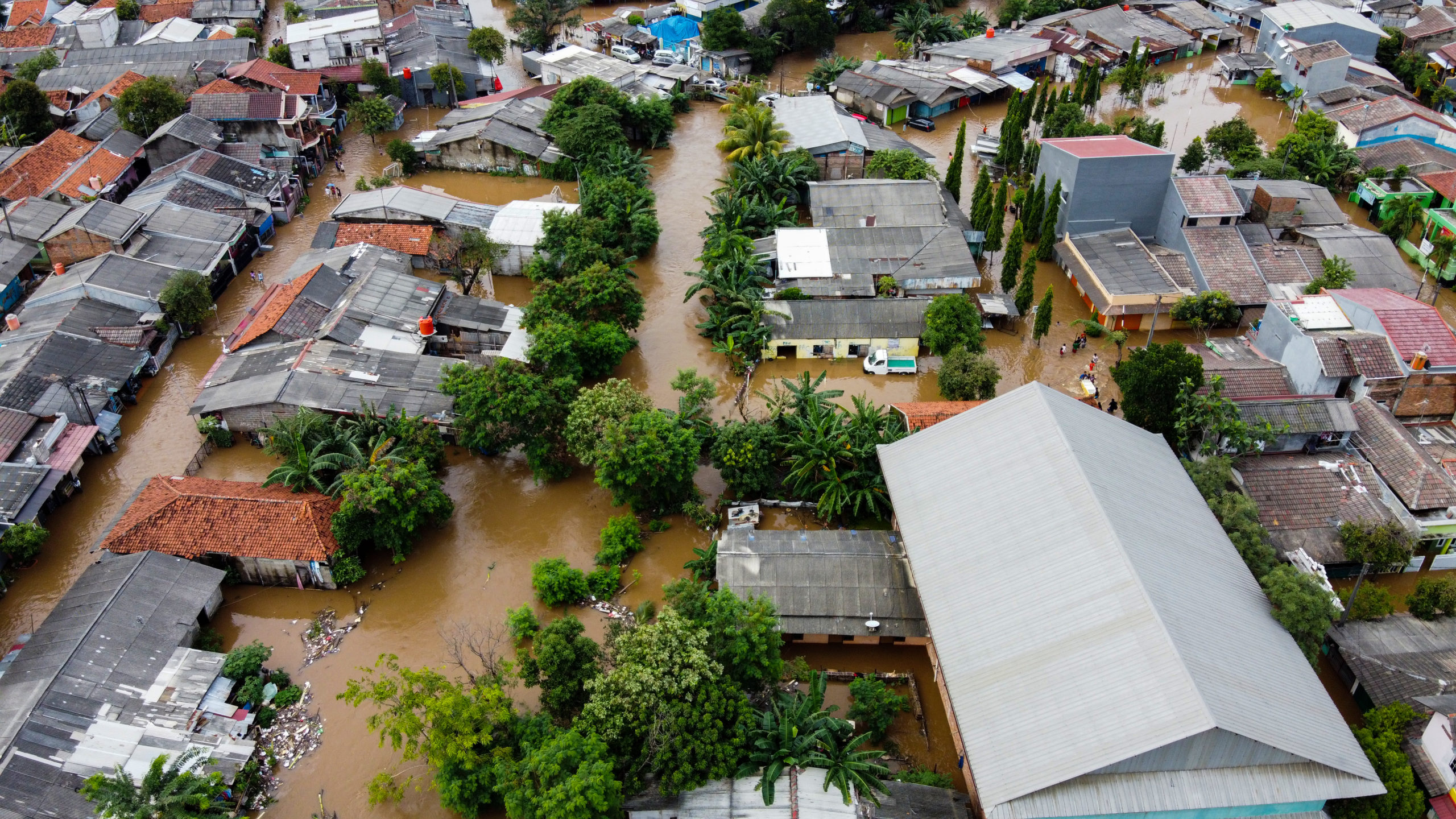For as long as buildings have existed (which is a really, really long time), humans have needed to inspect them to ensure their structural integrity is sound. For commercial properties, the inspection is not only a matter of protecting business assets but also a matter of liability should any accident occur. Humans have certainly come a long way since the days of cavemen eyeballing their dwellings and deeming them safe, and today there’s an incredibly accurate and efficient way to conduct commercial inspections: autonomous drones.
In this blog post, we’ll dive into the technology behind drone-powered commercial inspections, the benefits thereof, and what it all means for inspectors.
How commercial inspections work
With autonomous drones, inspectors simply tap out a flight perimeter ahead of time on an iPad and watch the drone take off, make its rounds, and land. As the drone flies over the commercial building, it inspects roof damage via AI while also using thermal imaging to detect leaks and other damage potentially invisible to the human eye.
This isn’t standard thermal imaging that you may have heard of, where you’re presented with an estimated range of temperatures for a given area. Instead, today’s autonomous drones use what’s called radiometric thermal analysis, where a specific temperature is captured for specific points on the roof. This pinpoint precision allows inspectors to quickly and easily identify roof damage and other areas of concern.
In addition to leveraging radiometric thermal data to detect damage, commercial inspection drones can also conduct roof dimensional analysis, which makes the inspection process much more efficient. Rather than manually measuring roof slope and pitch, inspectors can watch as the drones effortlessly fly over the building and collect this data in a matter of minutes.
Between the radiometric thermal imaging and the roof dimensional analysis, drone-powered commercial inspections allow professionals to detect damage that would be otherwise hidden from the naked eye — like water pooling under a flat roof. When you also consider the minimization of human risk (no ladders required!), it’s easy to see why so many property owners and managers use advanced drone tech to make commercial inspections faster and easier.
Quantifying the efficiency of commercial inspections
Just how accurate are autonomous drones when it comes to commercial inspections? As previously mentioned, drones use radiometric thermal analysis to capture temperature readings with incredible precision. With thermal analysis and high-resolution imaging capabilities, inspection drones can provide visual accuracy of less than one millimeter!
Even the most seasoned inspectors can fall victim to human error, and with drones, commercial inspection is turned into a science. With drone-powered inspection, insurance pros can rest easy knowing their data is precise and their results are accurate and actionable.
In addition to being incredibly accurate, drone-powered inspections are also much faster than manual inspections. Whereas a manual roof inspection can easily take upwards of two hours, a drone can conduct its roof inspection in 20 minutes or less. In total, commercial inspections are up to five times as efficient as traditional inspections.
What this means for insurance professionals
If you’re an insurance pro, you don’t need to worry about having to steer the drone through its inspection flight. Once you map out the flight path on an iPad, the drone takes care of the rest with autonomous flight.
Once the drone touches back down to land, it performs its data analysis in as little as 30 minutes and uploads the findings to the cloud. Using the same iPad they used to create the flight perimeter, insurance professionals can then look over the data results while they’re still on-site, make informed decisions, and complete their inspection.
When it comes to commercial inspections, drones deliver superior accuracy because they utilize radiometric thermal imaging, which delivers precise temperature values rather than a range of estimates. Furthermore, by leveraging roof dimensional analysis, drone tech removes all guesswork and human error from the equation and turns commercial inspection into a science.
Drone-powered commercial inspections are also far more efficient than traditional/manual inspections. An autonomous drone can complete its flight path in as little as 20 minutes, compared to a multi-hour endeavor for manual inspections. Once the inspection data is uploaded to the cloud, the inspector can review the results while still on-site — giving back hours of time to the property owners and managers.
Finally, autonomous commercial inspections are incredibly safe, with no ladders or precarious footing required. The drones can even reach areas inaccessible to humans and can do so in a matter of seconds. Overall, autonomous drones make commercial inspections accurate, efficient, and safe. If you have any questions about commercial inspections, please don’t hesitate to get in touch.
Need more information on Kespry? Check out our website at kespry.com



